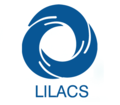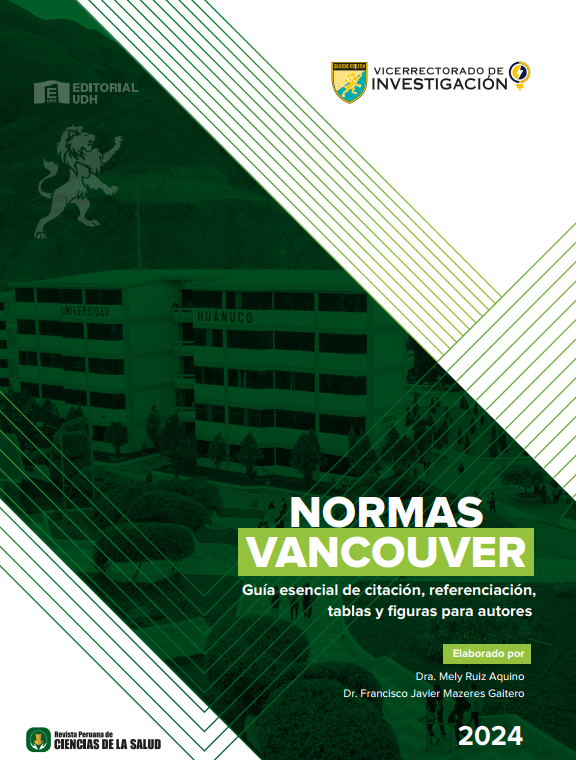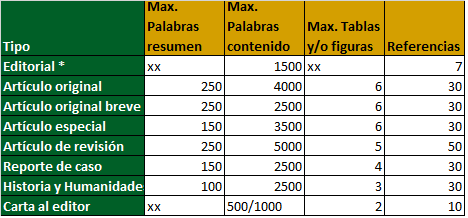Política editorial
- Política de acceso abierto
- Derechos de autor
- Política de autoarchivo
- Política de apelación
- Política de retiro de artículos
- Política de preservación digital
- Política de pago por publicación de artículos
- Política de Descargo de responsabilidad
- Política de declaración de privacidad
- Políticas frente a conductas no responsables en la investigación
- Política de erratas, correcciones y retractaciones
- Uso de inteligencia artificial en la redacción
- Política de recuperación de metadatos
- Política PrePrints
- Índice de rechazo
1. Política de acceso abierto
Esta Revista proporciona acceso abierto inmediato a su contenido, basado en el principio de que ofrecer al público un acceso libre a las investigaciones ayuda a un mayor intercambio global del conocimiento. La Revista es de acceso abierto, lo que significa que todo el contenido está disponible de forma gratuita sin cargo para el usuario o su institución.
Los usuarios pueden leer, descargar, copiar, distribuir, imprimir, buscar o vincular los textos completos de los artículos, o utilizarlos para cualquier otro trabajo académico de investigación, sin pedir permiso previo del editor o del autor, todo bajo la licencia de Creattive Commons, CC-BY 4.0. La Revista apoya y se adhiere a la Declaración sobre la Evaluación de la Investigación (DORA) https://sfdora.org/signers/ para dar énfasis a las investigaciones publicadas.
2. Derechos de autor
Los autores que presenten artículos a la Revista, al momento de enviar la declaración jurada de autoría y autorización para publicación del artículo. En caso de publicación, mantienen sus derechos de autoría intelectual, cediendo los derechos de primera publicación en cualquier formato impreso o electrónico de la Revista Peruana de Ciencias de la Salud.
Esta publicación estará sujeto a la Licencia de reconocimiento de Creative Commons que permite a terceros compartir la obra siempre que se indique su autor y su primera publicación esta revista.
3. Política de autoarchivo
La revista permite a los autores a compartir, difundir y divulgar sus investigaciones publicadas por la revista (post-print versión del editor) en los diferentes medios de comunicación (redes sociales académicas, repositorios y portales) disponibles en la web.
4. Política de apelación
Los autores que piensan que sus manuscritos fueron erróneamente rechazados pueden enviar una carta de apelación al editor general que manejó el manuscrito por correo electrónico. La carta debe detallar la preocupación del autor y establecer cómo se puede revisar o aclarar el manuscrito para abordar los problemas clave mencionados por los editores y los revisores. Los editores siguen las pautas de COPE y rara vez revierten sus decisiones originales. Muchos rechazos implican juicios de prioridad de los editores que los autores generalmente no pueden abordar a través de una apelación. Una vez recibida la apelación, los editores pueden confirmar su decisión de: rechazar el manuscrito, invitar a un manuscrito revisado o buscar una revisión adicional por pares o una revisión estadística del manuscrito original.
5. Política de retiro de artículos
Para retirar el manuscrito del proceso editorial, el autor debe informar por el correo electrónico de la revista el motivo del retiro del manuscrito y esperar la respuesta del editor para continuar con el envío de la propuesta a otra revista.
6. Política de preservación digital
Esta Revista utiliza el sistema Lots of Copies Keep Stuff Safe (LOCKSS) para conservar los metadatos de los artículos de la revista en un archivo permanente y seguro (cláusula de exención de responsabilidad). LOCKSS es un programa de código abierto elaborado por la Biblioteca de la Universidad de Stanford que permite a las editoriales conservar los metadatos de los artículos.
7. Política de pago por publicación de artículos
La Revista no aplica cargos de procesamiento de artículos (Article processing charge, APC), en ninguno de los manuscritos aceptados para los autores. Lo cual comprende la recepción, revisión inicial, revisión por pares, corrección de estilo, diagramación, publicación, asignación de DOI y otros.
8. Política de Descargo de responsabilidad
La Revista no se solidariza con las opiniones vertidas por los autores. Las opiniones expresadas por los autores son de su exclusiva responsabilidad y no reflejan necesariamente la opinión del Comité Editorial de la Revista. La mención del nombre comercial de ciertos productos no implica que la Revista apruebe, recomiende o los prefiera a otros similares que no se mencionen.
La mención del nombre comercial de ciertos productos no implica que la Revista apruebe, recomiende o los prefiera a otros similares que no se mencionen.
9. Política de declaración de privacidad
La Revista preservará los nombres y datos incluidos en el registro del OJS. Se utilizará exclusivamente para los propósitos indicados por la Revista y no estarán disponibles para ningún medio o personas ajenas a la misma.
10. Políticas frente a conductas no responsables en la investigación
Incluye: plagio, falsificación de datos, manipulación de datos a favor de los resultados, uso indiscriminado de autocitas y autoría injustificada. Si se encuentra alguna de estas malas prácticas en algún artículo durante el proceso editorial o después de la publicación, el Comité Editorial evaluará el caso y tomará las medidas necesarias con base en las recomendaciones del Comité de Ética en Publicación (COPE, por sus siglas en inglés), Word Association Medical Editors (WAME), International Committee of Medical Journal Editors (ICMJE) y Council of Science Editors (CSE). Estas medidas implican: el rechazo o la retractación del artículo, la no aceptación de próximos artículos presentados, la notificación a otras revistas; así como, la comunicación a las autoridades respectivas (institución de origen de los autores, institución que financió el estudio, colegios profesionales y comités de ética).
10.1 Política de detección de plagio
Plagio. Es la copia no reconocida o un intento de atribuir incorrectamente la autoría de imágenes, textos, ideas, resultados, entre otros. Se debe prestar atención a la atribución y adecuada citación al momento de resumir y/o parafrasear textos de otros autores. El “reciclaje de texto” o reutilizar de partes de una publicación de investigación previa del mismo autor del artículo actual es una forma de autoplagio.
El Comité Editorial estableció como política editorial que los artículos presentados a la revista para evaluar su publicación sean sometidos a un software de detección de similitudes para la identificación de plagio (Turnitin). Sólo se aceptarán artículos con un máximo del 20% de coincidencia con otras publicaciones, siempre que dicha coincidencia no esté compuesta en su totalidad por varios párrafos consecutivos. Los artículos que superen este porcentaje serán devueltos al autor con el informe correspondiente para que realice las respectivas correcciones y, si lo considera conveniente, podrá ser enviado nuevamente a la Revista para evaluar su publicación.
10.2 Infracciones menores
Las infracciones leves son faltas que no justifican una investigación completa, en la que todas las partes implicadas tienen derecho a réplica; por ejemplo, la inclusión injustificada de autores, el abuso de la autocita, entre otras consideradas por el Comité.
10.3 Infracciones graves
Este tipo de falta requiere una investigación completa en la que participen los superiores y los empleadores de la persona objetivamente acusada para su notificación. En caso de que existan indicios de culpabilidad, la Revista podrá involucrar a expertos externos (número limitado de personas a consideración del Comité Editorial) para el dictamen final y la sanción (alteración de resultados, plagio, autoplagio, doble presentación de artículos, entre otros considerados por el Comité). El autor tiene derecho a recurrir este dictamen.
Los procedimientos a seguir en caso de detectar una falta se basarán en las guías de la COPE:
En el caso de detectar plagio:
Plagio en un manuscrito presentado.
Plagio en un artículo publicado.
En el caso de detectar publicación redundante:
Publicación redundante (duplicada) en un manuscrito presentado.
Publicación redundante (duplicada) en un artículo publicado.
En caso de detectar fabricación de datos:
Datos fabricados en un manuscrito enviado.
Datos fabricados en un artículo publicado.
10.4 Consecuencias
La Revista toma la decisión sobre el tipo de sanción en función de la gravedad de la infracción:
a) En el caso de las faltas leves, La Revista enviará una notificación a los implicados, sobre la falta cometida, para que puedan evitar este tipo de comportamiento en el futuro.
b) En caso de falta grave, La Revista puede enviar una carta formal al editor, al organismo financiero o al superior de las personas implicadas, exponiendo el caso en cuestión. Según la gravedad de la falta, la Revista puede publicar un editorial sobre la conducta poco ética, adjuntando el nombre de las personas implicadas (el caso concreto), eliminar o retirar las publicaciones de las personas implicadas de forma indefinida.
11. Política de erratas, correcciones y retractaciones
Los artículos y otros tipos de documentos que hayan sido publicados en esta Revista se mantendrán vigentes, exactos e inalterados en la medida de lo posible. Sin embargo, pueden surgir circunstancias excepcionales en las que se publique un artículo que luego deba ser corregido, retractado o incluso eliminado. Tales acciones se harán después de una cuidadosa consideración por parte del Comité Editorial, junto con el apoyo del Comité Científico, para garantizar que se realizan con las máximas garantías y basándose en las normas recomendadas por el Committee on Publication Ethics (COPE).
En estos casos, el régimen de normas y mecanismos de control de la comunicación científica tiene varios procedimientos principales de rectificación de acuerdo con el tipo, gravedad y consecuencias de la inexactitud detectada. Estos pueden ser en forma de un aviso de errata o corrección, una retractación y, en raras ocasiones, la eliminación del artículo. El propósito de este mecanismo es que los cambios sean transparentes y siempre se garantice la integridad del registro académico.
Erratas
Se publicará un aviso de errata cuando sea necesario corregir un error u omisión cometido por la Revista después de la publicación que pueda afectar al registro de la publicación o a la reputación de las autorías o de la Revista, pero donde la integridad académica del artículo permanezca intacta.
Todos los errores irán acompañados de un aviso por separado. El aviso debe proporcionar detalles claros del error y los cambios que se han realizado en el documento.
En estas circunstancias:
1. Se corregirá el artículo.
2. En el artículo se agregará una nota al final con la referencia al aviso de errata.
4. Se publicará un aviso o corrección por separado vinculado a la versión corregida.
5. El documento de corrección irá paginado.
Correcciones
Se producirá un aviso de corrección cuando sea necesario corregir un error u omisión cometido por los/las autores/as que afecten al registro de la publicación o a la reputación de las autorías o de la Revista, pero donde la integridad académica del artículo permanezca intacta.
Todos los errores irán acompañados de un aviso por separado. El aviso debe proporcionar detalles claros del error y los cambios que se han realizado en el documento.
En estas circunstancias:
1. Se corregirá el artículo.
2. En el artículo se agregará una nota al final con la referencia al aviso de corrección.
3. Se publicará un aviso de errata o corrección por separado vinculado a la versión corregida.
4. El documento de la errata o corrección irá paginado.
Retractaciones
Se publicará un aviso de retractación cuando un error importante invalide las conclusiones del artículo, o cuando haya habido mala conducta en la investigación o mala conducta en la publicación. Los autores pueden solicitar la retractación de sus artículos si sus motivos cumplen los criterios de retractación.
Se considerará la retractación:
1. Si hay evidencia clara de que los hallazgos no son confiables, ya sea como resultado de una mala conducta o un error.
2. Si los hallazgos se han publicado anteriormente en otro lugar sin las referencias cruzadas, el permiso o la justificación adecuados (por ejemplo, casos de publicación redundante o publicación duplicada).
3. Si la investigación constituye plagio.
4. Si existe evidencia de autoría fraudulenta.
5. Si hay pruebas de revisión por pares comprometida.
6. Si existen indicios de investigación poco ética e infracciones de códigos éticos profesionales.
Cuando se haya tomado la decisión de retractar un artículo:
1. Se agregará una marca de agua al artículo retractado a la versión publicada del registro del artículo.
2. Delante del título del artículo se pondrá artículo retractado: [título del artículo]
3. Se publicará una declaración de retractación por separado, titulada Retracción: [título del artículo], que se vinculará al artículo retractado. Esta nota irá firmada por el Director de la Revista.
4. La declaración de retractación irá paginada.
Eliminación de artículos
La eliminación de un artículo se llevará a cabo en circunstancias excepcionales en las que los problemas sean de naturaleza muy grave y no puedan abordarse mediante un aviso de corrección o retractación.
Esto únicamente ocurrirá:
1. Cuando el artículo sea claramente difamatorio, o infrinja otros derechos.
2. Cuando un artículo esté sujeto a una orden judicial.
3. Cuando el artículo, si no se actúa en consecuencia, podría suponer un riesgo grave para la comunidad científica.
En caso de que se elimine un artículo, se mantendrán los metadatos (autorías y título) y el texto se sustituirá por un documento que indique que el artículo ha sido eliminado por motivos legales.
12. Política de recuperación de metadatos
El protocolo OAI-PMH (Open Archives Initiative–Protocol for Metadata Harvesting) para la recuperación de metadatos de los artículos de la Revista: http://revistas.udh.edu.pe/index.php/RPCS/oai
13. Uso de inteligencia artificial en la redacción
La RPCS sigue las recomendaciones del ICMJE, COPE y WAME, promoviendo la transparencia y la ética en la investigación y publicación científica.En ese sentido, al momento de enviar un manuscrito, los autores deberán declarar si han utilizado herramientas de inteligencia artificial (IA), como modelos de lenguaje de gran tamaño (Large Language Models), chatbots o generadores de imágenes, en la elaboración de su trabajo.
Es importante destacar que las herramientas de IA no pueden figurar como autores de un artículo, ya que no cumplen con los criterios de autoría: no pueden asumir responsabilidad sobre la exactitud, integridad y originalidad del contenido, ni declarar conflictos de interés.
Si los autores han empleado IA en alguna parte del manuscrito, deberán especificarlo en la sección "Declaración de uso de IA", utilizando el siguiente formato:
Declaración de uso de IA: Durante la preparación de este trabajo, el autor o los autores utilizaron [NOMBRE DE LA HERRAMIENTA / SERVICIO] con el propósito de [MOTIVO] en las siguientes secciones: [ESPECIFICAR PARTES DEL MANUSCRITO], incluyendo tablas o figuras generadas.
Los autores asumen total responsabilidad sobre el contenido del manuscrito, incluidas las secciones en las que se haya empleado IA, y serán responsables de cualquier incumplimiento de la ética de publicación.
14. Política preprints
Los preprints son versiones de artículos científicos que aún no han sido evaluados por pares y que se encuentran disponibles en repositorios públicos o servidores certificados. A consideración del Comité Editorial, los manuscritos podrán ser depositados en formato electrónico en la colección SciELO preprints, antes de la revisión por pares correspondiente.
Los detalles del preprints (incluyendo título y código DOI) deberán declararse en el formato de Declaración Jurada, que forma parte del envío inicial del manuscrito.
Toda versión de un trabajo sometido a la Revista Peruana de Ciencias de la Salud requiere la aprobación del Comité Editorial para su publicación o registro en índices, bases de datos e instalaciones de almacenamiento por parte de los autores o terceros. Esto aplica a todas las versiones: borradores, preprints, postprints, ahead of print, online first, entre otras.
Esta política es compatible con la licencia Creative Commons Atribución-NoComercial (CC BY-NC) y se orienta a promover las buenas prácticas editoriales, evitando la duplicación o ambigüedad en las publicaciones.
15. Índice de rechazo
La tasa de rechazo de La Revista Peruana de Ciencias de la Salud es mayor a 50% en el último número de la revista.
Vol. 7 nro 1, 2, 3 de 2025 = 55%
Vol. 6 nro 1, 2, 3 y 4 de 2024 = 57.5%
Vol. 5 nro 1, 2, 3 y 4 de 2023 = 48.5%
Vol. 4 nro 1, 2, 3 y 4 de 2022 = 40%
Vol. 3 nro 1, 2, 3 y 4 de 2021 = 30%
Vol. 2 nro 1, 2, 3 y 4 de 2020 = 25%
Vol. 1 nro 1, 2, 3 y 4 de 2019 = 10%





















